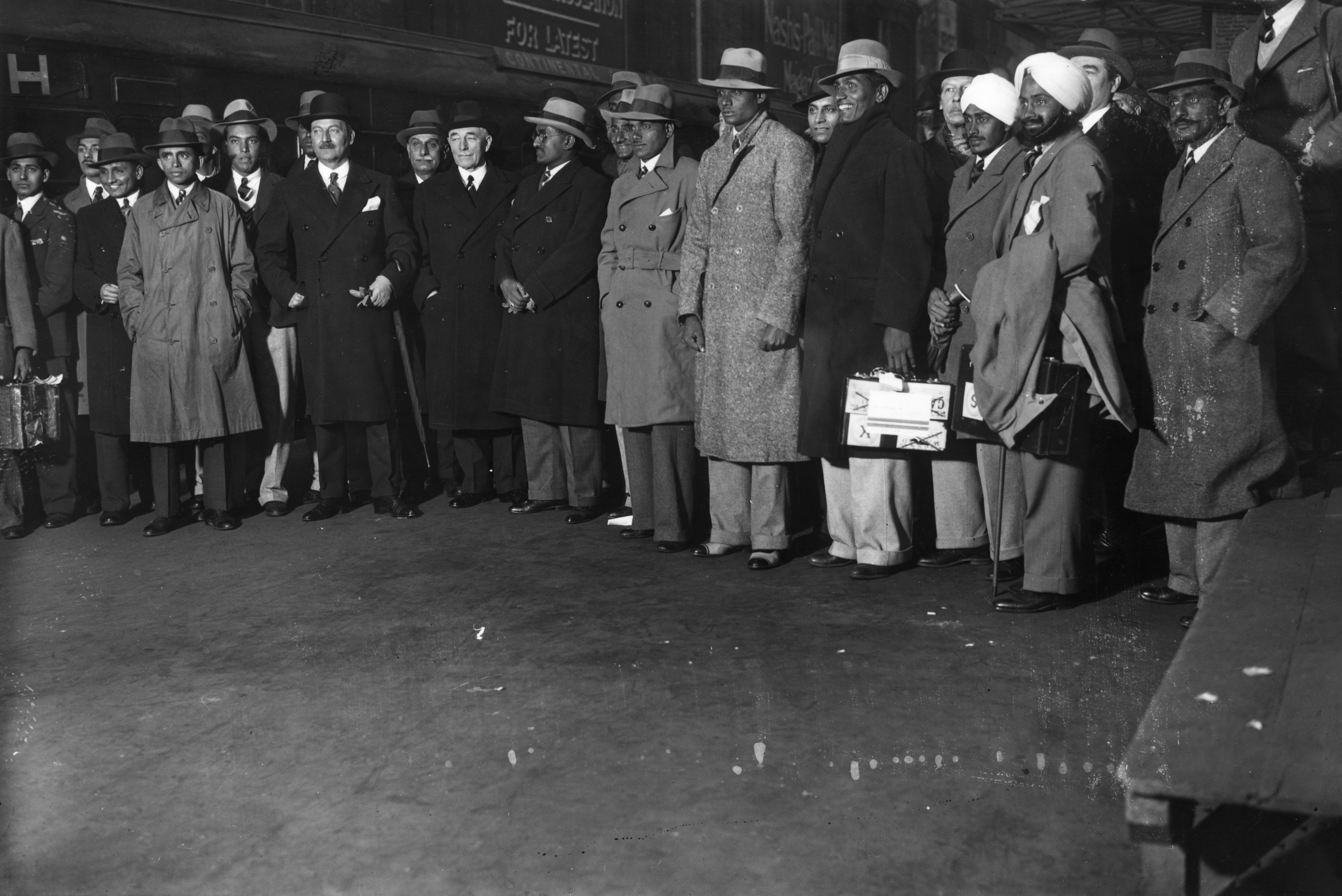A Tale of 500 Tests | India's Test history since 1932
India is a collage of different cultures and religions and it is a sport called ‘Cricket’ that unites these diverse religions into one. And when India play its 500th official Test match on 22nd September, it will not be just another occasion; it will be a festival.

Cricket may have its roots in England. But, from the very day the game extended its branches to the Indian sub-continent through the British, it has been embraced by the Indians as their own. In their glorious journey of 84 years of Test Cricket, the Indian team has experienced many highs and lows. The bitter taste of defeat has given them lessons to learn, and again the sheer joy of victory has given them the desire to go on and win again. Indian Cricket has now travelled through time to reach the landmark of 500 Test matches, and 500 is simply not just a number. It is a number which measures the love that the Indians have for the game, a measure of their desire to strive for excellence and most importantly a number that signifies the vision that the forefathers of Indian cricket had, when India played its first official Test match.

 ©
© It is the Green Park in Kanpur that is going to host this iconic 500th Test match for India, and a dangerous New Zealand side is going to be their opponent. The Board of Control for Cricket in India (BCCI) has invited all former Indian men’s and women’s Test captains to be a part of the grand occasion. As the former captains gather together to watch the historic match, the environment would also lead them down the memory lane to relive their experiences and most pleasant memories on the field. They would discuss and recall the days when they first fell in love with the game, the days when they first learnt to bowl or bat, the days when they made their respective debut for their country and the days when they led their country to memorable victories giving the nation of a billion people reasons to celebrate.
Although Cricket in India has an official record of 84 years, it was brought to India by the British in the 18th century. The first cricket match believed to be played in India was in 1721. Since then, cricket slowly but steadily started occupying a special place in the heart of the Indians, and it was in 1848 that the Parsis established the Oriental Cricket Club in Bombay, the first cricket club to be established by Indians. Rahul Dravid had once said: “Scoring the first run is the most difficult job while batting”. Similarly, cricket in India did not become an overnight success. The Parsis toiled hard for several years and finally brought people from different sects and religions of the country to play a quadrangular tournament between them, the Muslims, the Sikhs and the Europeans. Years went by, and quality players slowly started emerging from the Indian soil. Among them, Ranjitsinhji and Duleepsinhji were the best who went on to play for the England Cricket team as well. It is also after these two men that the Ranji Trophy and Duleep Trophy, which are an integral part of India’s first class cricket structure today, have been named. The hard work, dedication and desire to play cricket for the country finally came a full circle when the Indian team went on their first official tour to England in 1911. However, they could only get the chance to play the English county team instead of the England national team.

 © Getty Images
© Getty ImagesFinally India played its first official Test match at the iconic Lord’s in London against their colonial masters on June 25, 1932 becoming the sixth country to attain Test status. In the three-day match, India did well to bowl England out for just 258 runs in the first innings as Mohammad Nissar claimed 5-93. But, the Indian batting collapsed for just 189 runs with CK Nayudu top-scoring with 40. England posted 275 runs in the second innings and set India a target of 346 runs; but this time as well, India were bowled out for a paltry total of 187 thus losing the match by 158 runs. India toiled hard for another three decades but could not win a Test match until 1952.
In between these years, India played a number of matches against different opponents. Although they could not win, they made sure that they were learning and gathering enough experience to become a superior team someday. It was in 1933 that India for the first time played a Test series on home soil. Although England won the three-match series 2-0, Lala Amarnath made it historic by scoring the first-ever Test century for India at the Gymkhana ground in Mumbai. For the next two decades, the results were similar but the margin of defeats was reducing considerably.
Finally the time had arrived when India were destined to experience the taste of their first Test victory and that too against England-the pioneers of the game! It was India’s 25th official Test match and the venue was Chennai. India won by an innings and 8 runs under the leadership of Vijay Hazare courtesy joint centuries by the duo of Pankaj Roy and Poly Umrigar and some destructive bowling by M. Mankad who claimed match figures of 12-108. Although they won another series at home against New Zealand in 1956, their form dipped over the next five years as they lost home series to England and Australia. But, the Indian team was again back in full force in the 1960s as they won series against England and New Zealand at home and also drew against Australia and Pakistan. India added another feather to their hat in that decade as they won their first overseas series in 1967-68 against New Zealand. The 1960s was the turning point in Indian cricket.
The following decade saw the emergence of many iconic Indian players who made India a real force in home conditions. On one hand, India found batsmen like Sunil Gavaskar and Gundappa Viswanath, and on the other hand they had found spinners like Erapalli Prasanna, Srinivasa Venkataraghavan, Bishen Singh Bedi and BS Chandrasekhar. All in all, India had a bowling attack that could make the batsmen dance to their tunes with their spin and a batting line-up that could demolish any bowling attack at will. India won series in England and West Indies in 1971 with this team.
India had become a pool of talented players in the 1980s, and players like Kapil Dev, Mohammad Azharuddin, and Ravi Shastri made the team even stronger. Kapil Dev became the most iconic cricketer of that era as India lifted the World Cup in 1983 under his leadership. It was also during this period that Gavaskar became the first cricketer to score 10,000 runs in Tests with 34 centuries to his name. Although India had completed 50 years of Test cricket in the 1980s, still their record stood at just 36 victories in 194 Test matches then. But it was the 1990s that ushered in the age of the modern legends.

 © Getty Images
© Getty ImagesSachin Tendulkar, Sourav Ganguly, Javagal Srinath, Rahul Dravid, and Anil Kumble made their debut in the 1990s. It was also in the early 1990s that Kapil Dev became the highest wicket-taker in Tests with 434 wickets surpassing Sir Richard Hadlee. During this decade, India could not register any overseas Test victory under Mohammad Azharuddin but maintained a good form at home winning 17 out of 30 matches. Sachin Tendulkar, The God of Indian Cricket, was made the captain in 1990s but resigned after losing series in Australia and South Africa. The captaincy was handed back to Azharuddin but a match-fixing scandal brought an end to his career. Sourav Ganguly was made the Indian captain after him, and India went through a major transition under Dada’s leadership. India won Test matches in Sri Lanka, England, Zimbabwe and West Indies under his leadership in 2001-02. He also led India to a series draw against Australia at their den and won a Test series in Pakistan in 2003-04. Ganguly soon became a fan favourite for his leadership abilities.
However, a fall-out between coach Greg Chapell and Sourav Ganguly resulted in his exclusion. Rahul Dravid was made the captain, and he led India to its first Test series victory in the Caribbean since 1971 in 2006. Then, Mahendra Singh Dhoni was named as the Indian captain in all formats after Rahul Dravid resigned from captaincy. Although he was not made the captain immediately in Tests, the Test side was led for a while by Anil Kumble after whose retirement Dhoni took over. Under his captaincy, India became the No.1 Test team in the world for the first time in their history after beating Sri Lanka 2-0.
From that time onwards, most people have witnessed how India has progressed under the leadership of Dhoni and now under Virat Kohli. The Test series victory in West Indies and Sri Lanka are the most recent successes under the young Indian captain, and he will be looking to enhance his reputation in the upcoming series against New Zealand as well. The journey has been long; 499 Test matches and 129 victories and most of those have been recent ones. The 500th Test match will certainly give the journey a sense of achievement. However, a victory in it will give a much-anticipated sense of completion, satisfaction, joy and happiness to the hearts of a billion Indian fans who have stood by the team through thick and thin.

Comments
Sign up or log in to your account to leave comments and reactions
0 Comments